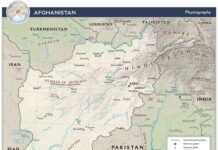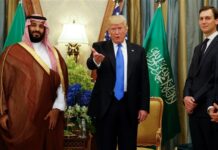Context
 Media reports indicate that prominent Pakistani Taliban commanders have held meetings with Al Qaeda leaders and Afghan Taliban on November 27 in Wanna – South Waziristan, and on December 11 in Datta Khel – North Waziristan. Reports also indicate that Al Qaeda and Afghan Taliban leaders tried to convince Pakistani Taliban to set aside their differences, and assist them in their fight against the US and NATO forces in Afghanistan.
Media reports indicate that prominent Pakistani Taliban commanders have held meetings with Al Qaeda leaders and Afghan Taliban on November 27 in Wanna – South Waziristan, and on December 11 in Datta Khel – North Waziristan. Reports also indicate that Al Qaeda and Afghan Taliban leaders tried to convince Pakistani Taliban to set aside their differences, and assist them in their fight against the US and NATO forces in Afghanistan.
Two different narratives have emerged on these critical developments, as US troops begins to withdraw from Afghanistan and reconciliation process speeds up. One of these suggests the formation of new alliances represented by the Islamic hardliners, while the other projects an imminent clash emerging with in the TTP ranks.
Analysis
Al Qaeda, Afghan And Pakistani Taliban Alliance – Shura-e-Murakeba
The gatherings of Al Qaeda, Afghan, and Pakistani Taliban seem to have taken place as US drone strikes were on hold in the aftermath of the November NATO Mohmand strike. Senior Al Qaeda leader Abu Yahya al-Libi as well as Siraj-ud-din Haqqani of Haqqani network, attended the meetings. Reportedly, other leaders attending included Hakimullah Mehsud and his deputy Waliur Rehman of Tehreek-e-Taliban Pakistan (TTP). Spokesperson for TTP, Ehsanullah Ehsan stated that Maulvi Nazir and Hafiz Gul Bahdur, which Pakistan considers as Good Taliban, including Zabiullah Mujahid and Maulvi Sangeen, were also present. Some accounts suggest that Mullah Omar had sent Siraj Haqqani and Mullah Mansour to broker the agreement.
The congregations have produced the following outcomes:
- A consultative body, know as Shura-e-Murakeba to sort out differences between the groups
- Avoiding the unnecessary killings and kidnappings for ransom
- Ending of attacks on Pakistani military and refocusing of efforts towards US led coalition in Afghanistan
The declaration of not attacking Pakistan forces could be the result of the peace negotiations, taking place between the TTP and Pakistan. According to media reports, TTP has not fully committed to stop attacking Pakistani targets.
On the other hand, Pakistan’s security forces claimed on Sunday to have killed Qari Kamran, the TTP commander in Khyber Agency. Qari Kamran was involved in attacks on security personnel, particularly the suicide attack on Shabqadar that killed 90 cadets, and the twin bombing in Nowshehra that resulted in the death of 20 people. At the same time, statements from TTP indicate there are no assurances that attacks on Pakistan’s military would end.
At the same time, some media sources indicate that a rift has emerged between TTP leader Hakimullah Mehsud and his deputy Waliur Rehman, and it’s a matter of time before it develops in to a full blown infighting. Hakimullah Mehsud is accused of accepting support from India. He has also been at odds with Mullah Nazir of South Waziristan, Hafiz Gul Bahadur of North Waziristan, and Fazal Saeed of Kurram Agency.
Pakistani Jihadist And Pakistan Defense Council
In a fashion similar to the meetings of Taliban and Al Qaeda in FATA, Pakistan’s Punjab based jihadist also came together in a recent meeting in Lahore, held after the NATO Mohmand attack. In this gathering, banned religious group Jamaatud Dawa (JD) protested against the granting of most favored nation (MFN) to India, and declared it was ready for jihad against NATO. The gathering of 44 right wing entities and personalities was held under the banner of the Difaa-i-Pakistan Council (Pakistan Defense Council).
Afghan Reconciliation
On the other hand, the Afghan reconciliation process is also gaining momentum. Recently, close aides to Mullah Muhammad Omar met US representatives for the peace talks. Syed Muhammad Akbar Agha, the former leader of Jaish-ul-Muslimin Movement, said that Taliban are open to negotiating with US and Qatar would be the best place for Taliban to open an office. According to media reports, in the negotiations, he proposed the release of important Taliban leaders incarcerated in Guantanamo. These included, Maulawi Khairkhah, Noorullah Noori, Maulawi Wasiq, Mohammad Nabi Khosti, Haji Wali Mohammad and Mullah Fazlullah.
Meanwhile, US clarified its position when Vice President Joe Biden recently stated that Taliban per se are not US enemy. Mr. Biden encouraged reconciliation process with the Taliban and declared that war in Afghanistan is not against the Taliban. Subsequently, White House defended Biden’s statement and reiterated that the war in Afghanistan was mainly against Al Qaeda, to stabilize the country, and to root out those who pose a threat to the US.
Emerging Strategies of US And Pakistan
The meetings of Al Qaeda, Afghan Taliban, and TTP in FATA, are meant to show that despite the US surge these groups remain potent. Additionally, as oppose to creating divides between them, which was one of the main premise of the US AfPak strategy, extremists of the region are stable enough to be forming alliances. This only increases US dependence on Pakistan, to maintain calm after the US withdraws from Afghanistan. Additionally, it strengthens the negotiation position of Taliban.
The new US strategy in the Middle East and South and Central Asia, is premised not on preventing the Islamists from gaining power, but to counter the extremists through the use of moderate Islamists. In the changed ground situation, it is no longer possible for the secular and authorarian quarters to deliver.
These gatherings in FATA and Islamists in Lahore, will also be interpreted as an attempt of Pakistan’s military to pull the Islamists together in the aftermath of the NATO Mohmand attack on November 26. The incident is proving to be a turning point towards changing the threat perception of Pakistan.
After 9/11, Pakistan had to increasingly shift its focus to FATA and to counter Al-Qaeda and many other formulations of extremists that came to reside there. Overtime, the country came under considerable pressure from US and NATO to revise its traditional national security focus; away from India and towards dealing with extremists. The Mumbai Incident served as a proof that the danger Pakistan faced was not external, but internal. This argument was used to convince Pakistan to move its troops from its eastern border, to carry out operations in FATA, including North Waziristan. Now, the pendulum may be swinging back to its original formulation.



